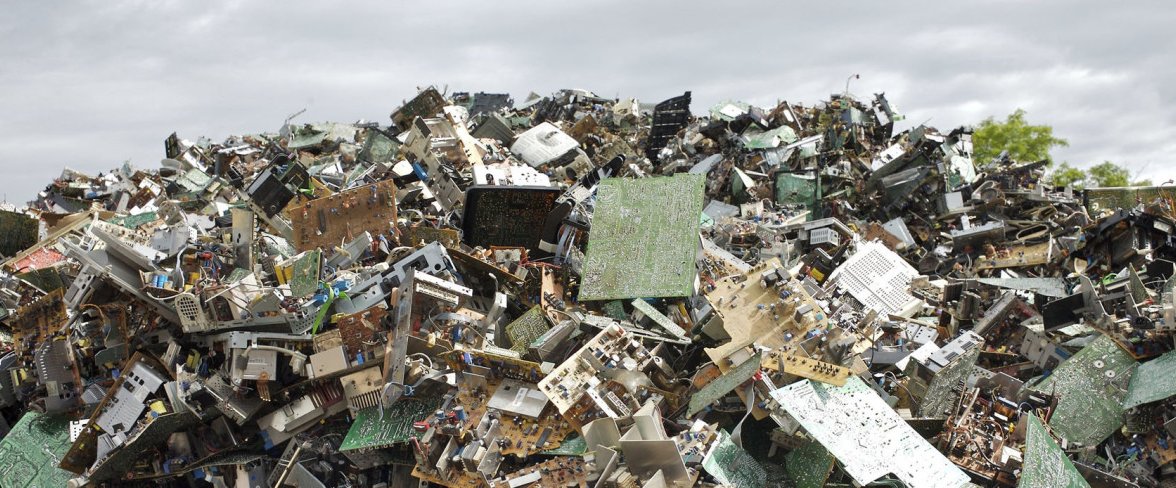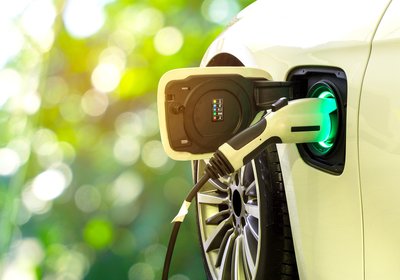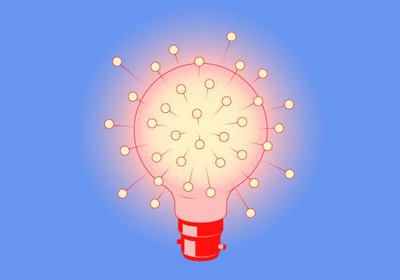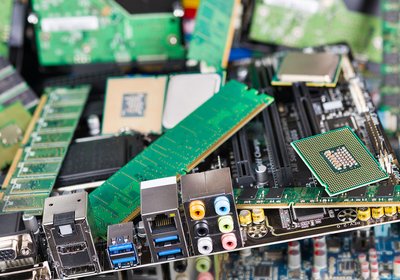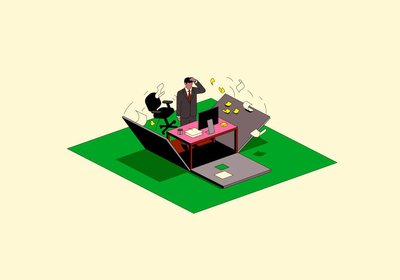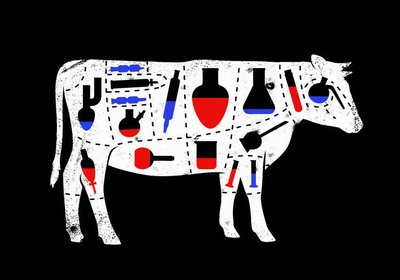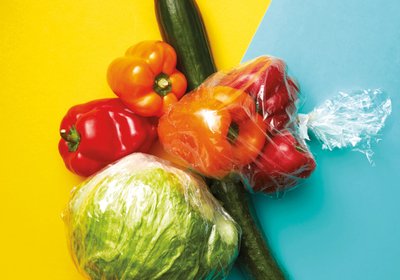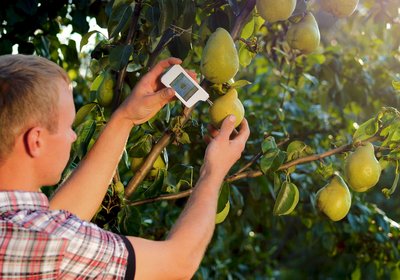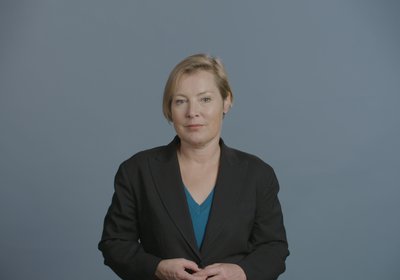The growing problem of e-waste
By Aleksandra Wisniewska
Globally, we produce 50m tonnes of toxic electronic waste every year — and the UK is one of the worst offenders
Monday morning, and a sorry bunch of tangled cables, a broken coffee machine and a single clip-on light is all there is inside the metal crates at Veolia, a noisy recycling depot where residents of the London borough of Southwark drop off broken or unwanted electrical devices.
But the week has only just started. Already a family is unloading a van packed to the roof: a standing lamp with a floral shade, a microwave, a hairdryer. The depot is gateway to a countrywide recycling process. The family’s discarded items will either be handed over to charities for repair or shredded into parts and recycled, making their way back into the market as components in new electronic items. This facility is one of the biggest of its kind in the UK, and it diverts more than 95 per cent of Southwark’s waste — from more than 140,000 homes — away from landfill. Among its load, the plant processes several hundred tonnes of electronic waste — or e-waste — a year. But on a global scale, very little makes it this far.
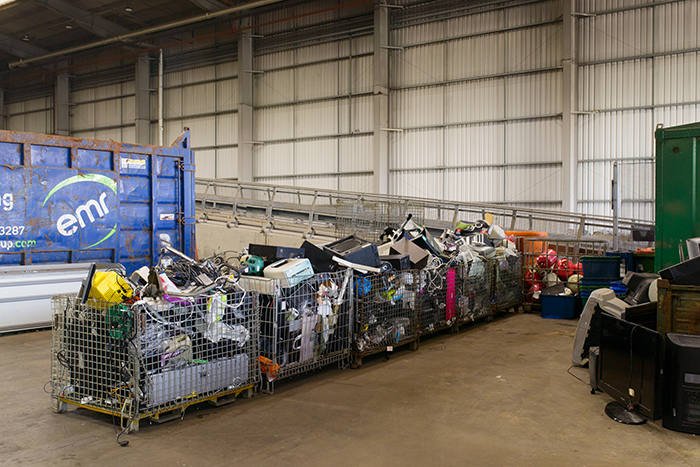
E-waste is the fastest-growing element of the world’s domestic waste stream, according to a 2017 report by the UN’s Global E-waste Monitor. Some 50m metric tonnes will be produced annually this year — about 7kg for every person in the world. Just 20 per cent will be collected and recycled.
The rest is undocumented, meaning it likely ends up in landfill, incinerated, traded illegally or processed in a substandard way. That means hazardous substances spilling into the environment, poisoning the ground and people living nearby.
“Once e-equipment becomes waste, it is hazardous. If you just dumped it in the environment, it would cause a problem,” says Richard Kirkman, chief technology and innovation officer at Veolia. Kirkman has spent the past 20 years working in the waste sector, and has amassed knowledge about seemingly every recycling process out there. But when he started, he says, everything was going to landfill. “Things have got much better [over time].”
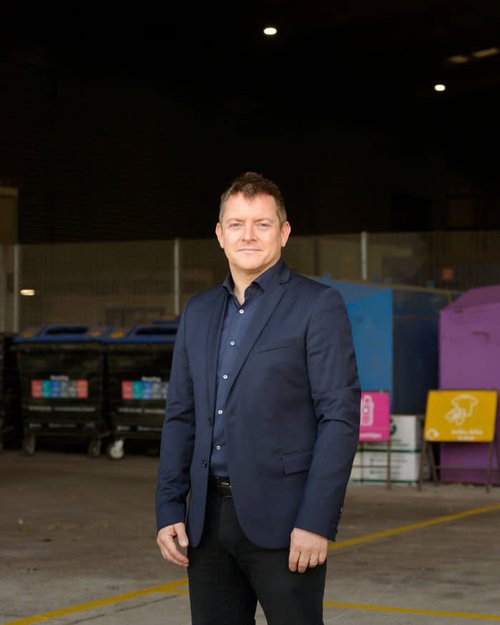
Heavy metals such as mercury, lead and cadmium — commonly found in LCD screens, refrigerators and air-conditioning units — as well as chemicals such as CFCs and flame retardants found in plastics can contaminate soil, pollute water and enter the food chain.
Research last year by Basel Action Network, an NGO, linked toxic e-waste shipped from Europe to contaminated chicken eggs in Agbogbloshie — a Ghanaian scrapyard where 80,000 residents subsist by retrieving metals from electrical waste. Eating just one egg from a hen foraging in the scrapyard would exceed the European Food Safety Authority’s tolerable daily intake for chlorinated dioxins 220-fold.
These toxic substances mean that defunct electronics are designated hazardous waste by the EU, which bans exports of this kind to non-OECD countries.
But the European Environment Agency estimates that Europe still illegally exports 1.3m tonnes of e-waste each year. An investigation in 2019 by Basel Action Network found that the UK is the worst offender in Europe for illegal e-waste exports to developing countries, with most of its load going to Africa.
The e-waste problem in the UK is particularly bad. The country produces 24.9kg a person a year — nearly 10kg more than the EU average, according to a recent report from the Environmental Audit Committee. In 2018, 1.2m tonnes of electrical devices were sold in the UK, and 500,000 tonnes made it to recycling centres.
Some appliances are more likely to be recycled than others. The recycling rate for big appliances, such as fridges and cookers, is about 80 per cent. That is because they are harder to dispose of and eventually get picked up, even when they are dumped by the kerb. Of small appliances, however, barely one in five makes it to the recycling centre.
Because items such as toasters and hairdryers fit into household bins, more often than not it is easier to chuck them than to take them to a recycling centre or arrange collection from the council over the phone. The challenge, says Kirkman, is to make all electronic items recyclable and offer easy ways to do it, such as doorstep collection.
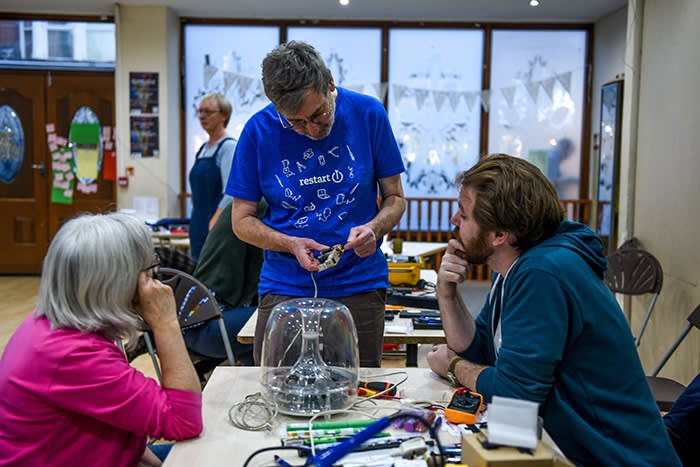
Across the world, governments are trying different ways to reduce e-waste and limit the amount that ends up in landfill. For some time, EU countries have operated a one-for-one take-back system — which means that distributors need to take back, for free, an older version of any equipment they sell you. But since the rapid rise of online retailers, this has been harder to implement.
New York has RTS (Retail Track Systems), a phone app that allows customers to schedule pick-ups — or “Uber for trash”. In China, the UN Development Programme worked with internet company Baidu to develop another mobile app called Baidu Recycle, connecting users to certified disposal and recycling facilities.
Most electronic waste that makes its way to the Southwark recycling centre is shipped off for more specialised treatment. Small televisions are sent to a plant in Bridgnorth, Shropshire, one of the UK’s leading dedicated e-waste processing facilities. HDPE plastics — such as those found in plastic bottles — are sent to a Dagenham plant, metals to the main reprocessing metal mills and lightbulbs go to a facility that Veolia operates in Limay, outside Paris.

“There are lots of different types of plastic in a coffee maker,” says Kirkman, which can complicate the process. In the end, all e-waste needs to be reduced to core metals. “It’s a bit like a mining activity,” he says.
Recycling facilities must adapt all the time. For example, one tonne of fluorescent tubes currently pass through Veolia every year, to be processed in its facility in France. There, the ends are cut off, the insides sucked out and its mercury dust is recycled to make new lightbulbs.
But in a few years’ time, LED lightbulbs will start to be brought in to the recycling centre (their lifespan is about 10 years — and they have been popular for about seven years). A completely new process will need to be designed to deal with them. Every now and then, Kirkman says, the company reaches a “tipping point” — and all the machinery and tech has to be replaced.
In a plant in the Midlands, robots have been programmed to dismantle flatscreen TVs, extracting precious metals such as cobalt or lithium, whose deposits are limited and increasingly valuable. “One of the hardest things about recycling is that you are not sure how [the manufacturers] made it,” says Kirkman.
Veolia is trying to encourage companies to include this information on their devices. It could be a file with instructions readable by robots that could then proceed with the dismantling, making the process “easier, cheaper and more circular”. However, manufacturers have so far kept a close guard on the design of their products.
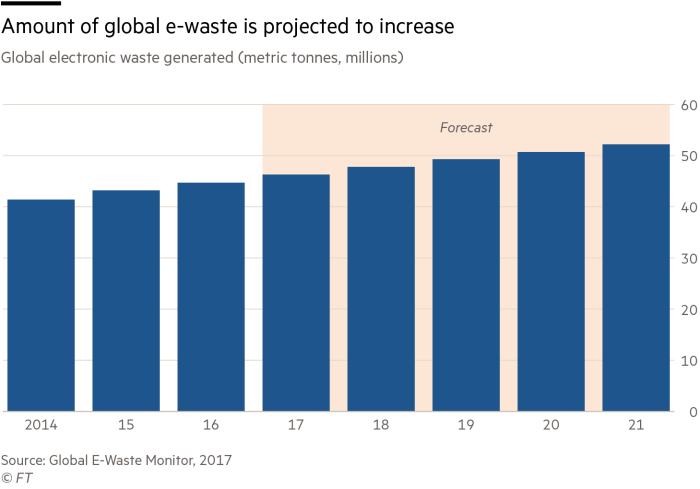
Many pressure groups and lawmakers have concluded that improving recycling rates will not be sufficient to tackle the global e-waste problem. Increasingly, they are advocating for the right to repair. In October, the EU adopted a package of design measures to make household appliances more repairable.
Starting from March 2021, manufacturers selling certain household appliances will have to ensure that spare parts are available for a number of years after their product has launched; that their items can be easily disassembled (and so use screws not glue); and that they provide access to technical information to repair professionals.
The rules cover appliances including refrigerators, washing machines, dishwashers and televisions. But they do not extend to IT equipment such as laptops, tablets and mobile phones.
The move is ambitious, says Chloé Fayole, programme and strategy director at ECOS, a network of 49 environmental NGOs in Brussels that campaigns for the right to repair. But ECOS’s next challenge is to push for the rules to extend to IT products, so that smartphones and laptops can be repaired and their batteries replaced more easily.
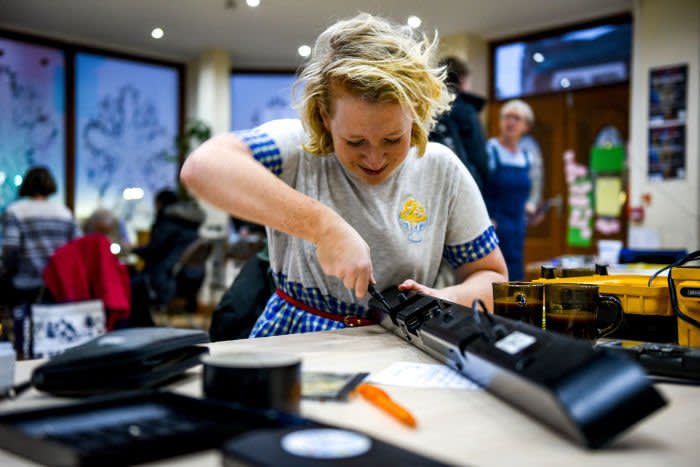
“The road to a new product is very easy, and the road to a successful repair very difficult,” says Martine Postma, founder and director of Repair Café International Foundation, which celebrated its 10th anniversary last year. Since its first repair event in Amsterdam in 2009, the organisation has grown to nearly 2,000 repair groups in 35 countries around the world.
Now, it wants to collect more data about electronic gadgets, to see if it can plot “weak points” in design that could help manufacturers make them more repairable.
So far, their data shows the Philips Senseo coffee machine is the most common item brought in to Dutch Repair Cafés. “It appears there is often the same thing that breaks in the coffee machine,” says Postma — a component in the water tank.
Philips says it was already aware of the fault when the Repair Café contacted them about it; and that all Senseo models made from the third quarter of 2014 no longer have this problem.
In a room off the high street in Tooting, south London, an army of fixers is busy helping people give their electronics a longer life.
“Where there are children around, there’s always going to be something stuck inside,” says Mike Grahn, as he pores over the broken CD player he is slowly dismantling. Grahn is “head fixer” at the event, where volunteers mend broken consumer electronic equipment for free.
The machine’s owner is a father of two little boys, who are playing happily nearby. After a few minutes of fiddling, Grahn pulls a tatty playing card from the disc drive. “Aha!”
The event is co-organised by the Restart Project, which operates in nearly 150 locations around the world, half of which are in the UK. “It is about improving our relationship with electronics,” says Janet Gunter, project co-founder and an activist in what she calls “ICT4D” — information technology for development. She started Restart in 2012 with a friend after becoming upset by attitudes to domestic electronic waste.
Its efforts are now focused on laptops. “We are going through and categorising the software and hardware faults to see what reduces the life cycle of these products,” says Gunter. She hopes their findings will help regulators come up with new requirements.
Both Gunter and Postma are confident that the data-collection exercise will have an impact on policy and manufacturing. Postma points out that, thanks to the efforts of organisations such as hers, the idea of a circular economy is becoming more popular, and repairs more mainstream, no longer the preserve of hardcore environmentalists and activists. “Now is the time when the change has to really start happening.”
Recycle, repair, reuse: how electronics can be given a second life
Flatscreen televisions
LCD TVs contain fluorescent backlights. When these are recycled, robots extract any hazardous substances, such as mercury, from them and segregate the TVs’ different plastics, metals and the circuit board. Many of these elements can be reprocessed and used in new products.
Refrigerators
The refrigerants — fluids and oil inside the motor — are drained and the motor itself is cut out and recycled. Then, in a sealed oxygen-free chamber, the gases from the fridge’s insulation foam are extracted. Next, the fridge is shredded in a machine resembling a big kitchen blender.
Lithium batteries
Batteries are first shredded or hammered (depending on their size) and the contents are then submerged in caustic water to neutralise the electrolytes. Metals are recovered and sold. The solution is filtered so that the carbon can be recovered and pressed into sheets. The lithium from the solution is converted into lithium carbonate in the form of fine white powder. After further processing, it is used to make sulphur-dioxide batteries.
